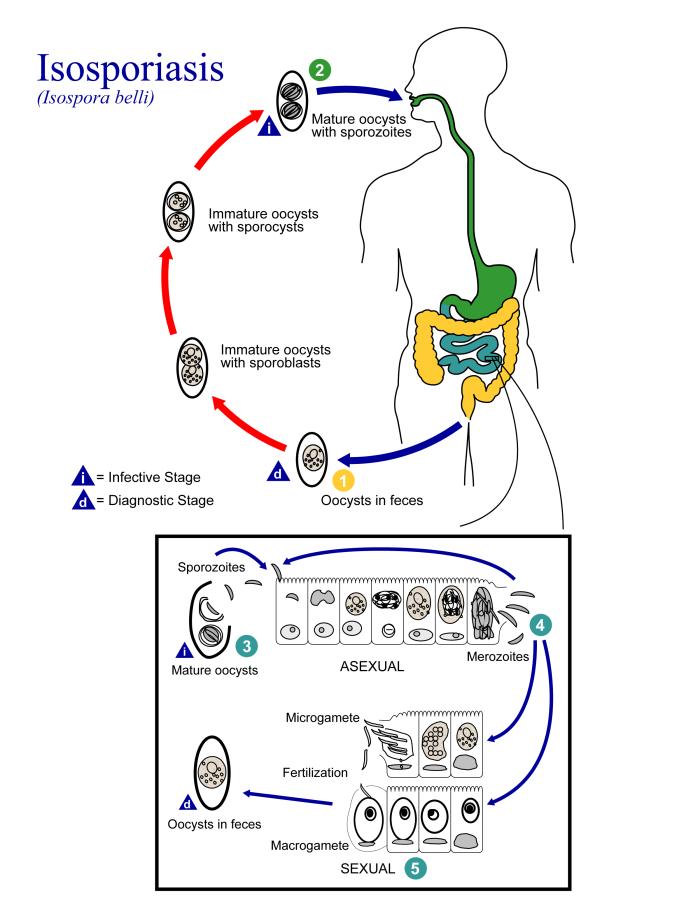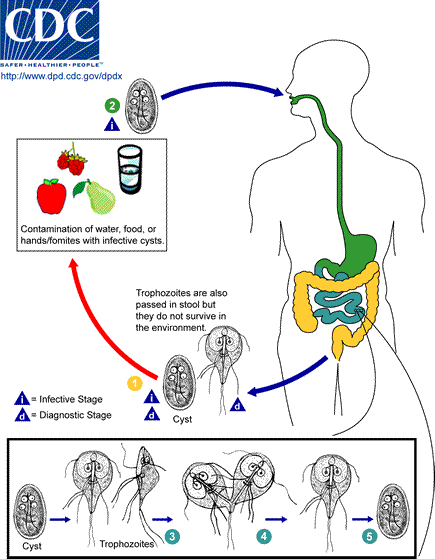|
List Of Parasites Of Humans
Endoparasites Protozoan organisms Helminths (worms) Helminth organisms (also called helminths or intestinal worms) include: Tapeworms Flukes Roundworms Other organisms Ectoparasites References {{Portal bar, Biology, Medicine * Parasites Parasitism is a Symbiosis, close relationship between species, where one organism, the parasite, lives on or inside another organism, the Host (biology), host, causing it some harm, and is Adaptation, adapted structurally to this way of lif ... * ... [...More Info...] [...Related Items...] OR: [Wikipedia] [Google] [Baidu] |
Granulomatous Amoebic Encephalitis
Granulomatous amoebic encephalitis (GAE) is a rare, usually fatal, subacute-to-chronic central nervous system disease caused by certain species of free-living amoebae of the genera ''Acanthamoeba'', ''Balamuthia'' and ''Sappinia''. The term is most commonly used with ''Acanthamoeba''. In more modern references, the term "balamuthia amoebic encephalitis" (BAE) is commonly used when ''Balamuthia mandrillaris'' is the cause. Symptoms and signs GAE starts slowly, with symptoms like headache, nausea, dizziness, irritability and a low-grade fever. The CNS symptoms depend on the part of the brain that is infected. Changes in behavior are an important sign. Other CNS signs may include seizures, focal neurologic signs, diplopia (double vision), cranial nerve palsies, ataxia, confusion, and personality changes. Some of the symptoms may mimic glioma (especially brainstem glioma), or other brain diseases, which may hamper timely diagnosis. The symptoms are caused by inflammatory necrosis of ... [...More Info...] [...Related Items...] OR: [Wikipedia] [Google] [Baidu] |
Cryptosporidiosis
Cryptosporidiosis, sometimes informally called crypto, is a parasitic disease caused by ''Cryptosporidium'', a genus of protozoan parasites in the phylum Apicomplexa. It affects the distal small intestine and can affect the respiratory tract in both immunocompetent (i.e., individuals with a normal functioning immune system) and immunocompromised (e.g., persons with HIV/AIDS or autoimmune disorders) individuals, resulting in watery diarrhea with or without an unexplained cough. In immunosuppressed individuals, the symptoms are particularly severe and can be fatal. It is primarily spread through the fecal-oral route, often through contaminated water; recent evidence suggests that it can also be transmitted via fomites contaminated with respiratory secretions. ''Cryptosporidium'' is commonly isolated in HIV-positive patients presenting with diarrhea. Despite not being identified until 1976, it is one of the most common waterborne diseases and is found worldwide. The infection beg ... [...More Info...] [...Related Items...] OR: [Wikipedia] [Google] [Baidu] |
Isospora Belli
''Cystoisospora belli'', previously known as ''Isospora belli'', is a parasite that causes an intestinal disease known as cystoisosporiasis.Centers For Disease Control: https://www.cdc.gov/parasites/cystoisospora/index.html This protozoan parasite is opportunistic in immune suppressed human hosts. It primarily exists in the epithelial cells of the small intestine, and develops in the cell cytoplasm. The distribution of this coccidian parasite is cosmopolitan, but is mainly found in tropical and subtropical areas of the world such as the Caribbean, Central and S. America, India, Africa, and S.E. Asia. In the U.S., it is usually associated with HIV infection and institutional living. Morphology A fully mature (sporulated) oocyst of genus ''Isospora'' is a spindle-shaped body that has two sporocysts that contain four sporozoites each. The oocysts of ''Cystoisospora belli'' are long and oval shaped. They measure between 20 and 33 micrometers in length and between 10 and 19 microme ... [...More Info...] [...Related Items...] OR: [Wikipedia] [Google] [Baidu] |
Isosporiasis
Isosporiasis, also known as cystoisosporiasis, is a human intestinal disease caused by the parasite ''Cystoisospora belli'' (previously known as ''Isospora belli''). It is found worldwide, especially in tropical and subtropical areas. Infection often occurs in immuno-compromised individuals, notably AIDS patients, and outbreaks have been reported in institutionalized groups in the United States. The first documented case was in 1915. It is usually spread indirectly, normally through contaminated food or water (CDC.gov). Signs and symptoms Infection causes acute, non-bloody diarrhea with crampy abdominal pain, which can last for weeks and result in malabsorption and weight loss. In immunodepressed patients, and in infants and children, the diarrhea can be severe. Eosinophilia may be present (differently from other protozoan infections). at t ... [...More Info...] [...Related Items...] OR: [Wikipedia] [Google] [Baidu] |
Small Intestine
The small intestine or small bowel is an organ in the gastrointestinal tract where most of the absorption of nutrients from food takes place. It lies between the stomach and large intestine, and receives bile and pancreatic juice through the pancreatic duct to aid in digestion. The small intestine is about long and folds many times to fit in the abdomen. Although it is longer than the large intestine, it is called the small intestine because it is narrower in diameter. The small intestine has three distinct regions – the duodenum, jejunum, and ileum. The duodenum, the shortest, is where preparation for absorption through small finger-like protrusions called villi begins. The jejunum is specialized for the absorption through its lining by enterocytes: small nutrient particles which have been previously digested by enzymes in the duodenum. The main function of the ileum is to absorb vitamin B12, bile salts, and whatever products of digestion that were not absorbed by the ... [...More Info...] [...Related Items...] OR: [Wikipedia] [Google] [Baidu] |
Lumen (anatomy)
In biology, a lumen (plural lumina) is the inside space of a tubular structure, such as an artery or intestine. It comes . It can refer to: *The interior of a vessel, such as the central space in an artery, vein or capillary through which blood flows. *The interior of the gastrointestinal tract *The pathways of the bronchi in the lungs *The interior of renal tubules and urinary collecting ducts *The pathways of the female genital tract, starting with a single pathway of the vagina, splitting up in two lumina in the uterus, both of which continue through the Fallopian tubes In cell biology, a lumen is a membrane-defined space that is found inside several organelles, cellular components, or structures: *thylakoid, endoplasmic reticulum, Golgi apparatus, lysosome, mitochondrion, or microtubule Transluminal procedures ''Transluminal procedures'' are procedures occurring through lumina, including: *Natural orifice transluminal endoscopic surgery in the lumina of, for example, the ... [...More Info...] [...Related Items...] OR: [Wikipedia] [Google] [Baidu] |
Giardia Lamblia
''Giardia duodenalis'', also known as ''Giardia intestinalis'' and ''Giardia lamblia'', is a flagellated parasitic microorganism of the genus '' Giardia'' that colonizes the small intestine, causing a diarrheal condition known as giardiasis. The parasite attaches to the epithelium by a ventral adhesive disc or sucker, and reproduces via binary fission. Giardiasis does not spread via the bloodstream, nor does it spread to other parts of the gastrointestinal tract, but remains confined to the lumen of the small intestine. Giardia has an outer membrane that makes it possible to retain life, even when outside of the host body, and which can make it tolerant to chlorine disinfection. ''Giardia'' trophozoites absorb their nutrients from the lumen, and are anaerobes. If the organism is split and stained, its characteristic pattern resembles the familiar "smiley face" symbol. Chief pathways of human infection include ingestion of untreated drinking water (which is the most common m ... [...More Info...] [...Related Items...] OR: [Wikipedia] [Google] [Baidu] |
Giardiasis
Giardiasis is a parasitic disease caused by ''Giardia duodenalis'' (also known as ''G. lamblia'' and ''G. intestinalis''). Infected individuals who experience symptoms (about 10% have no symptoms) may have diarrhea, abdominal pain, and weight loss. Less common symptoms include vomiting and blood in the stool. Symptoms usually begin 1 to 3 weeks after exposure and, without treatment, may last two to six weeks or longer. Giardiasis usually spreads when ''Giardia duodenalis'' cysts within feces contaminate food or water that is later consumed orally. The disease can also spread between people and through other animals. Cysts may survive for nearly three months in cold water. Giardiasis is diagnosed via stool tests. Prevention may be improved through proper hygiene practices. Asymptomatic cases often do not need treatment. When symptoms are present, treatment is typically provided with either tinidazole or metronidazole. Infection may cause a person to become lactose intolerant, so ... [...More Info...] [...Related Items...] OR: [Wikipedia] [Google] [Baidu] |
Entamoeba Histolytica
''Entamoeba histolytica'' is an anaerobic parasitic amoebozoan, part of the genus ''Entamoeba''. Predominantly infecting humans and other primates causing amoebiasis, ''E. histolytica'' is estimated to infect about 35-50 million people worldwide. ''E. histolytica'' infection is estimated to kill more than 55,000 people each year. Previously, it was thought that 10% of the world population was infected, but these figures predate the recognition that at least 90% of these infections were due to a second species, ''E. dispar''. Mammals such as dogs and cats can become infected transiently, but are not thought to contribute significantly to transmission. The word '' histolysis'' literally means disintegration and dissolution of organic tissues. Transmission The active (trophozoite) stage exists only in the host and in fresh loose feces; cysts survive outside the host in water, in soils, and on foods, especially under moist conditions on the latter. The infection can occur when a ... [...More Info...] [...Related Items...] OR: [Wikipedia] [Google] [Baidu] |
Amoebiasis
Amoebiasis, or amoebic dysentery, is an infection of the intestines caused by a parasitic amoeba ''Entamoeba histolytica''. Amoebiasis can be present with no, mild, or severe symptoms. Symptoms may include lethargy, loss of weight, colonic ulcerations, abdominal pain, diarrhea, or bloody diarrhea. Complications can include inflammation and ulceration of the colon with tissue death or perforation, which may result in peritonitis. Anemia may develop due to prolonged gastric bleeding. Microbial cyst#In protists, Cysts of ''Entamoeba'' can survive for up to a month in soil or for up to 45 minutes under fingernails. Invasion of the intestinal lining results in bloody diarrhea. If the parasite reaches the bloodstream it can spread through the body, most frequently ending up in the liver where it can cause amoebic liver abscesses. Liver abscesses can occur without previous diarrhea. Diagnosis is typically made by stool examination using microscopy, but it can be difficult to distingu ... [...More Info...] [...Related Items...] OR: [Wikipedia] [Google] [Baidu] |
Dientamoeba Fragilis
''Dientamoeba fragilis'' is a species of single-celled excavates found in the gastrointestinal tract of some humans, pigs and gorillas. It causes gastrointestinal upset in some people, but not in others. It is an important cause of travellers diarrhoea, chronic diarrhoea, fatigue and, in children, failure to thrive. Despite this, its role as a "commensal, pathobiont, or pathogen" is still debated. ''D. fragilis'' is one of the smaller parasites that are able to live in the human intestine. ''Dientamoeba fragilis'' cells are able to survive and move in fresh feces but are sensitive to aerobic environments. They dissociate when in contact or placed in saline, tap water or distilled water. Etymology * Di refers to the two nuclei in the trophozoites (feeding stage of the organism). * Ent refers to the enteric environment in which the organism is found. * The species name ''fragilis'' refers to the fact that the trophozoite stages are fragile; they do not survive long in the stool af ... [...More Info...] [...Related Items...] OR: [Wikipedia] [Google] [Baidu] |
Dientamoebiasis
Dientamoebiasis is a medical condition caused by infection with ''Dientamoeba fragilis'', a single-cell parasite that infects the lower gastrointestinal tract of humans. It is an important cause of traveler's diarrhea, chronic abdominal pain, chronic fatigue, and failure to thrive in children. Signs and symptoms The most commonly reported symptoms in conjunction with infection with ''D. fragilis'' include abdominal pain (69%) and diarrhea (61%). Diarrhea may be intermittent and may not be present in all cases. It is often chronic, lasting over two weeks. The degree of symptoms may vary from asymptomatic to severe, and can include weight loss, vomiting, fever, and involvement of other digestive organs. Symptoms may be more severe in children. Additional symptoms reported have included: # Weight loss # Fatigue # Nausea and vomiting # Fever # Urticaria (skin rash) # Pruritus (itchiness) # Biliary infection Cause Genetic diversity As many individuals are asymptomatic carriers of ''D ... [...More Info...] [...Related Items...] OR: [Wikipedia] [Google] [Baidu] |
.png)



